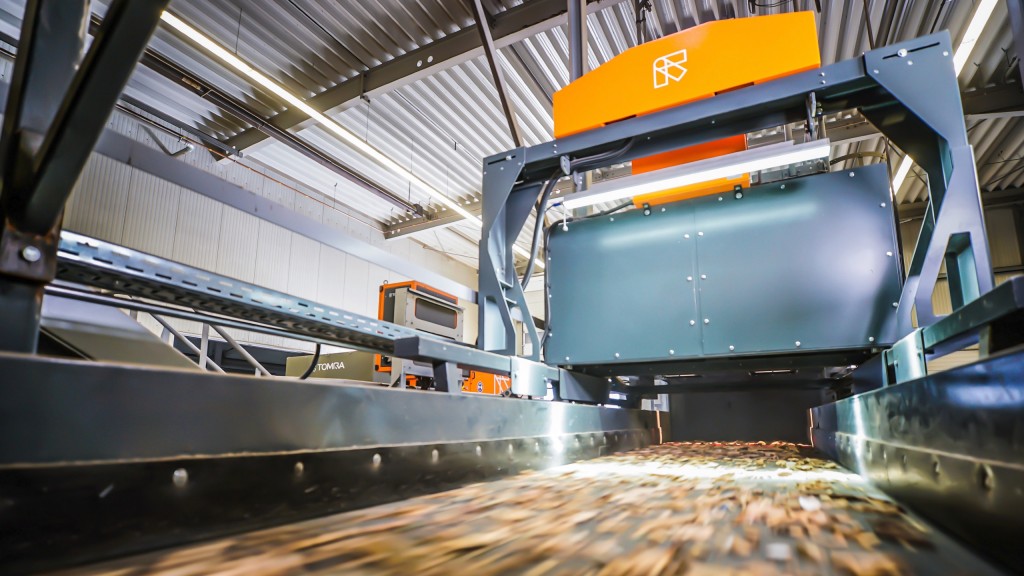
After its most recent market launch of a new deep-learning-based sorting application capable of separating wood by type, TOMRA Recycling has established an entire team focused on the wood segment. With a newly appointed segment manager, industry-savvy experts, waste wood application specialists, and service key account managers, TOMRA is strategically investing in the material recycling of waste wood and thus bolstering recycled content for the wood-based panel industry.
New opportunities in waste wood recycling
The primary use of recycled waste wood is currently in particleboard manufacturing. The wood-based panel industry aims to meet very strong market demand and improve product quality by increasing recycled content, resulting in a twofold benefit for the manufacturer. Recycled wood is up to 40 percent cheaper than fresh wood and generally dryer, which results in a significant decrease in energy consumption during the drying stage of the panel production.
Jose Matas, Segment Manager Wood at TOMRA Recycling, comments: "The current market development offers a huge opportunity to wood-based panels manufacturers. Using high-quality recycled materials allows them to produce superior quality wood-based panels, achieve higher yields and outputs while profiting from considerable cost reductions, preserving natural resources, and decreasing CO2 emissions."
Despite the advantages of wood waste recycling and market trends, a lack of infrastructure impedes the sector's development. Whereas Central Europe performs well in waste management from collection to recycling and reuse, the waste wood market outside Central Europe is still in its infancy.
A current view on the market reveals considerable discrepancies in segment maturity and opportunities for growth: Italy, for instance, collects about 2 million metric tons of waste wood annually, of which 63 percent is recycled and turned into panel boards. As a result, approximately 2 million tons of CO2 are saved annually, positively impacting the country's environmental credentials.
Opposed to Italy's high-performing system for waste wood collection and recycling, the European Union and the United States alone leave approximately 100 million tons of waste wood unrecycled. The figures show untapped opportunities that can be exploited when implementing holistic resource systems to effectively collect, sort, and recycle waste wood.
Unleashing the power of sensor-based sorting
The particleboard manufacturer's quest to increase recycled content and promote sustainable wood management requires optimized processes and advanced technologies to recover pure material fractions from a waste wood infeed stream. Thus, recyclers and particleboard manufacturers are advised to invest in the respective sorting technology to keep pace with industry demands and evolve with the market.
New sorting technology quickly adapts to changing waste compositions, increasing purity demands, and recovering single fractions. Integrating a wood sorting solution in recycling and production plants enables them to separate non-processed wood and processed wood from complex mixed waste stream and use the purest materials to produce high-quality particleboard on an industrial scale.
The ideal solution consists of two sorting systems, a high-throughput unit for removing inert material and metals and a state-of-the-art optical sorter with an integrated deep learning technology to separate waste wood into different material grades.
Since 2012, TOMRA has been sorting waste wood for high purity clean wood chips. With TOMRA's X-TRACT, recyclers and particleboard manufacturers can remove impurities like inert materials, metals, and glass with x-ray transmission (XRT) technology and deliver outstanding purity levels for secondary raw materials. A variety of wood-based materials, including engineered wood composites and polymers, must be accurately detected and separated into single fractions when creating recycled wood content that meets manufacturing standards. Only wood chip products with the highest quality (Wood A) can replace virgin materials in the production of wood-based panels, hence a new solution had to be found.
TOMRA's in-house team of industry experts, application engineers, and software developers collaborated to develop a new deep-learning-based application to sort wood chips by type. Available as an add-on for the company's AUTOSORT, GAIN is trained to detect, analyze, and separate non-processed wood (Wood A) and processed wood (Wood B). Moreover, it identifies and completely separates the MDF found in processed wood streams, therefore producing individual wood fractions of the highest possible quality for being used in the production of particleboards and MDF boards.
Since TOMRA's mechanics, sensors, and software are developed in-house, customers profit from perfectly matching machines and a high-performing system enabling them to increase their overall yield and profits.
Fabrizio Radice, Vice President and Head of Global Sales and Marketing at TOMRA Recycling, concludes: "TOMRA is strongly committed to circular waste management. Thus, I am delighted that we extend our focus to the wood segment with a dedicated team that brings a wealth of experience and profound knowledge. The team's expertise combined with our latest technologies will help recyclers and particleboard manufacturers meet both market demands and exploit the full potential of their operation while minimizing environmental impacts. In the following years, we are going to invest a lot in this promising segment and aim to see that the waste of one company becomes a valuable resource for another - a scenario we support to become commonplace."



